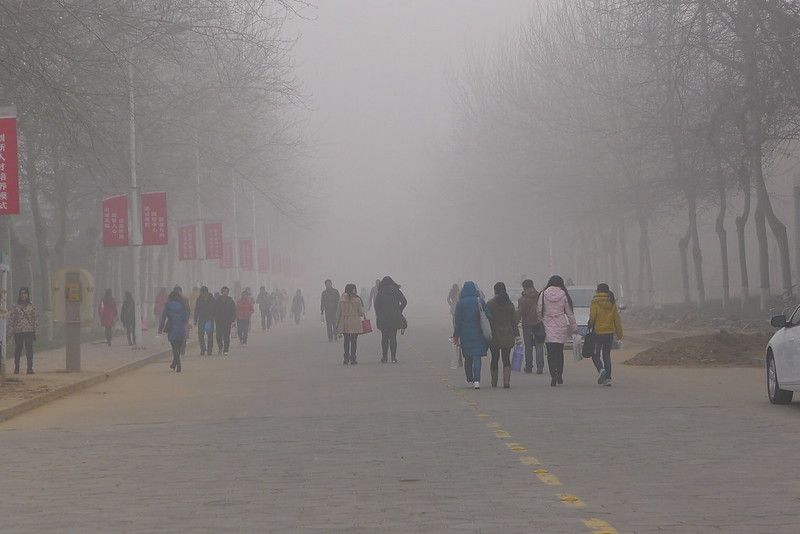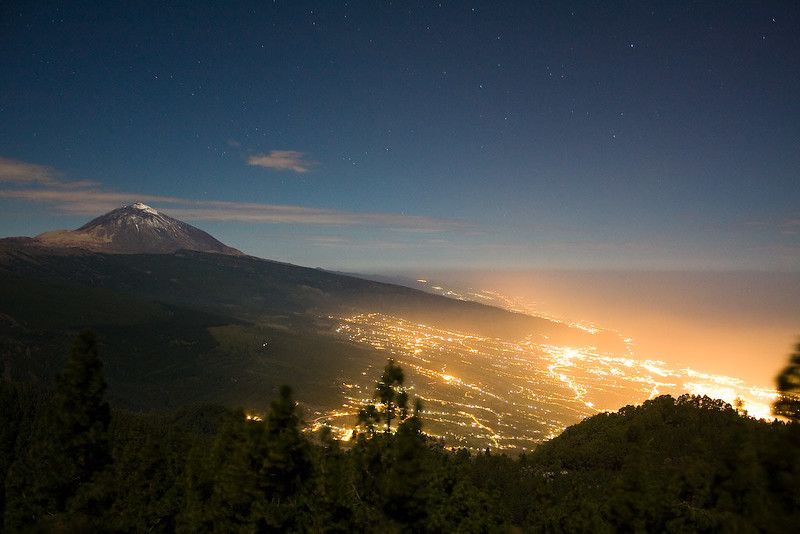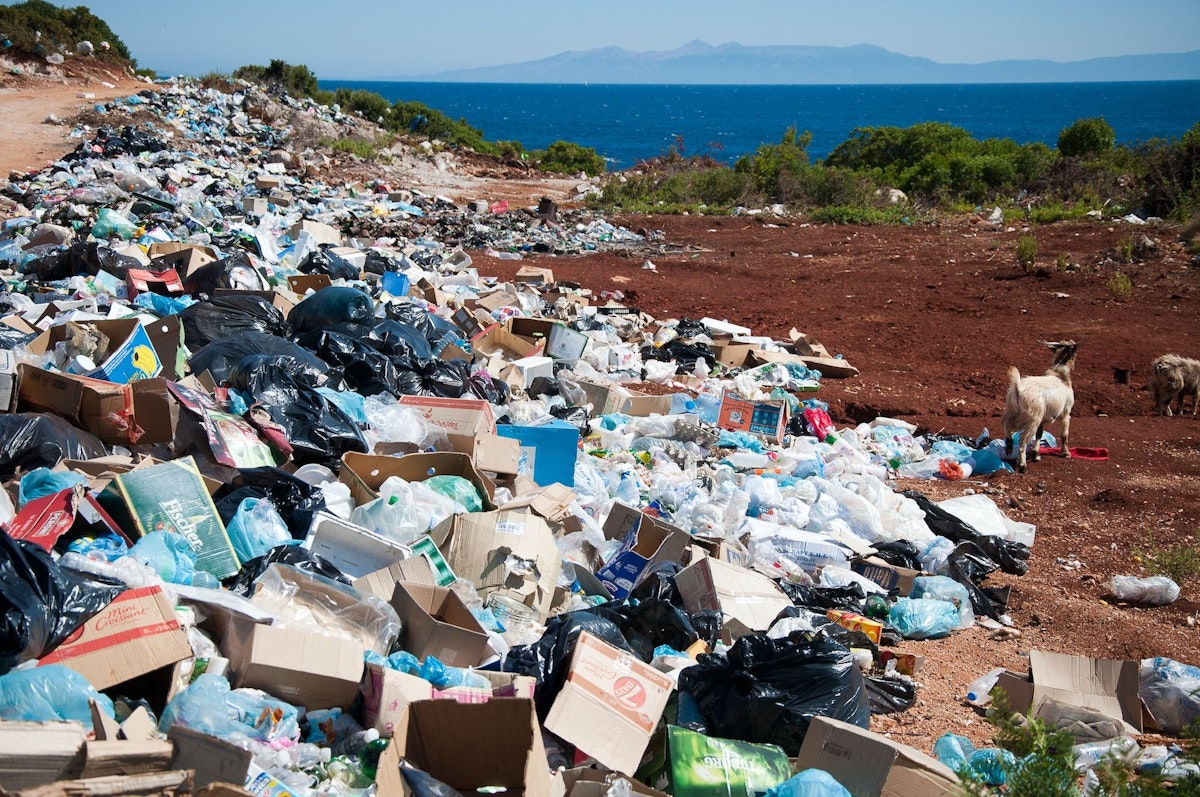There is soot marking the ceilings of caves once inhabited by our prehistoric ancestors—a reminder that throughout human history, and even before it, we've found ways to leave a mark on the earth.
Here is a rundown of some of the major forms of pollution. After all, the only way to solve the problem is to define it.
📚 Jump to section:
Air pollution
One of the simplest ways to classify pollution is to specify what part of the environment has been contaminated. The sky was among the first places we noticed damage: In 1306, King Edward I banned the burning of sea coal in London, which was already suffering smog.
Today, major sources of air pollution include vehicles and factories. Dust and chemicals can be whipped up from from farms, smoke comes from fires, from waste treatment plants emit gases.

In total, air pollution causes more than 4 million premature deaths each year. But lately we've focused on a different threat: CO2 and other greenhouse gases. CO2 makes up far less than 1% of the atmosphere, not nearly enough to be have a direct impact on human health, but more than sufficient to warm the globe. That's why CO2 has been classified as a pollutant.
Water pollution
Water pollution, like air pollution, intensified during the Industrial Revolution. Too much human waste was being dumped directly into waterways.

In many places, improved sewage systems have solved the problem. Still, two billion people drink water that's been infected with feces. Contaminated drinking water kills nearly a half million people each year.
Water pollutants can be divided into two groups: those coming from fixed, easily identified "point" sources like industrial facilities, and then all the other "nonpoint" sources. In industrialized countries, point-source pollution has declined significantly, but nonpoint-source pollution remains a problem. Fertilizers, for example, wash out of farm fields and residential lawns, and when these reach lakes and oceans, they feed algae, resulting in massive and potentially toxic blooms. On Lake Erie alone, the annual cost of algal blooms is in the hundreds of millions of dollars.
Soil contamination
The soil can be the recipient of contaminants, too. Sometimes soil acts as a temporary reservoir, holding chemicals before they rise into the air as vapors or leach into waterways. Pollutants can also be passed directly from the soil into the ecosystem including into human beings
Plastic pollution and littering
Sometimes, we categorize pollution not by where it winds up but by the material nature of the pollutant. Lately, plastics are a particular point of concern.
Due to our plastics addictions, soon the oceans could hold as much plastic as fish. Microplastics pass up the food chain, and have even been found in human organs.
The first synthetic plastic was developed in 1907, but the industry really took off in the 1950s. It's been growing exponentially since. Plastic is cheap enough that it feels easy to discard an object like a water bottle after just one use, which is a part of why we away 300 million tonnes of plastic each year. Some types of plastic take decades or even centuries for these materials decompose. In the meantime, huge amounts wash into the oceans. By 2050, the world's oceans are expected to hold more plastic than fish.
Plastic waste is sometimes due to "litter," a category of pollution that includes any waste tossed aside wantonly, rather than sent through our organized waste-collection systems. (Another example: the estimated 4.5 trillion cigarette butts discarded each year.) Though not all plastic pollution is litter. There are "microplastics," tiny particles that break away from plastic materials even when they are properly sorted into the trash. Synthetic clothing like nylon and fleece contain plastics, for example, and thus microplastics get sent into sewage lines from washing machines. Microplastics, too, wind up accumulating in waterways, and then in the bodies of both birds and fish—and even human organs.
Radioactive and electromagnetic pollution
Radiation, or the emission of electromagnetic waves, is not inherently problematic. Everything in the universe radiates energy; the hard-to-answer question is which forms of radiation we need to worry about.
There are two overarching categories. First, "ionizing" radiation, which is so high in energy that it can knock electrons out of atoms. Anything that emits ionizing radiation energy is dubbed "radioactive." Our cells tend to be good at repairing the damage. But if the radiation is delivering in massive doses—as happens with the detonation of a nuclear bomb or the meltdown of a nuclear reactor—ionizing radiation a can be very toxic.
Nuclear accidents are terrifying, but researchers have found that we tend to overestimate their risk. The pollution from coal plants is far more worrisome than nuclear fallout. Still, there are other sources of radioactive pollution: in the U.S. state of New Mexico, for example, uranium leaching out of abandoned mines has contaminated drinking water.

A second form of radiation has a longer wavelength, and is called "non-ionizing." Even this can be dangerous. (Sunburns result from non-ionizing light, for example.) The amount of non-ionizing radiation in our environment has increased substantially, thanks to cell phones. We're not yet sure of the impact, though; so far, no link between cell phones and cancer has been found.
Light and noise pollution
In ancient Rome, chariots were banned from nighttime travel; the clatter of wheels over cobblestones was just too much of a disturbance. This may have been the first recorded law limiting what's now called "noise pollution." Artificial light, too, can be a pollution problem.
In both cases, the line that demarcates "pollution" can be arbitrary. One household may install an outdoor light that they consider is essential to their security—and their neighbors might find it disrupts their sleep. It's clear, though, that these forms of pollution have a real cost. Excess lighting consumes substantial energy—adding to the climate crisis—and also disrupts the internal biological clock of humans and other animals. (Artificial lights can lead some migrating animals catastrophically astray.) Excessive noise causes hearing loss and even hypertension in humans and impacts ecosystems by disrupting animal navigation and reproduction.

Thermal pollution
Heat, too, can be considered a pollutant. This a particular problem at power plants, where water is often used to keep components from overheating. This coolant water is sent usually sent directly back into the lake or river from which it's drawn. Though this does not add chemicals to the waterway, the sharp jump in heat can disrupt ecosystems. Hot pavement, too, can cause thermal pollution: rainfall is rapidly heated before running into streams and creeks.
Visual pollution
Here's one last example to show how broad the concept of pollution has become: the Federal Highway Beautification Act of 1965 set limits on what kinds of signs could be displayed along interstates. Though it was not included in the original act, the phrase "visual pollution" was invoked in later amendments to the law.

Being bombarded with constant visual stimulus may have a real impact on our health. But the idea of visual pollution has been wielded in troubling ways: One academic paper categorizes wind turbines as visual pollution and argues that they negatively impact home values. That feels like putting the cart before the horse. Beauty matters—but only if we have a world that is here for us to enjoy. It's a reminder that pollution is bad, but the solution is never as simple as to just stop polluting. As in everything, we have to weigh costs and benefits to arrive at the world we want.
Read this next:
Climate change and the Amazon rain forest
March 9, 2021 · Climate knowledge

